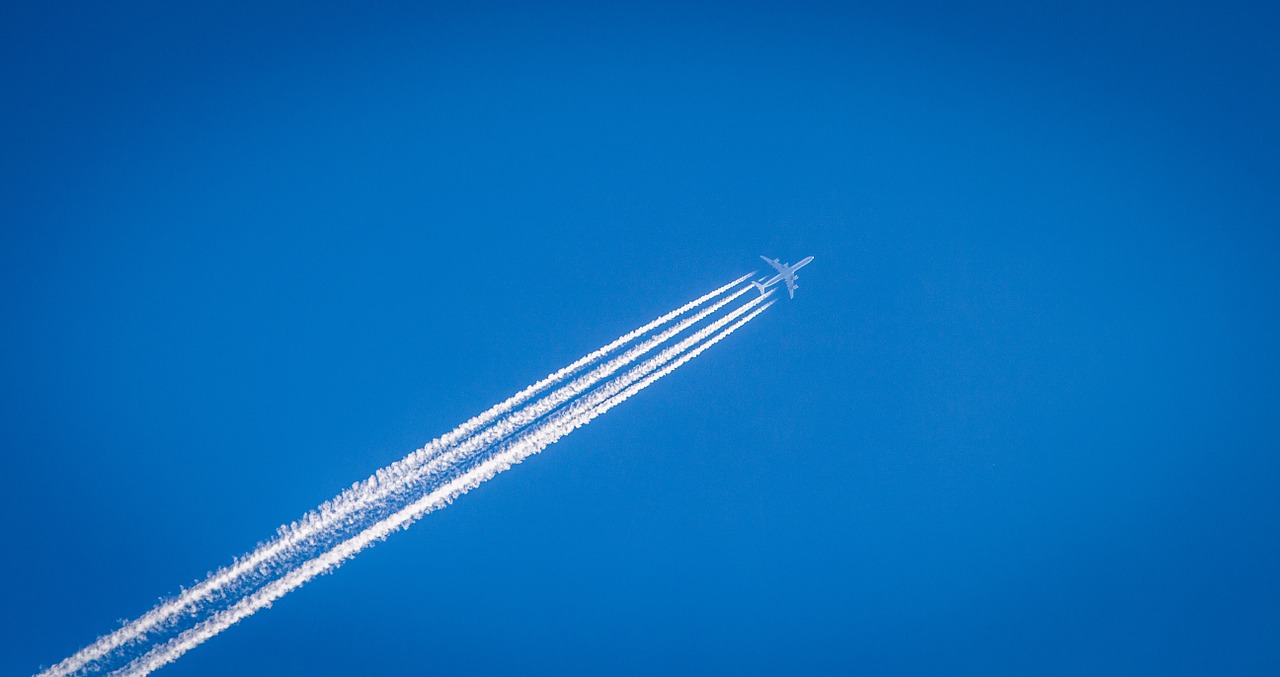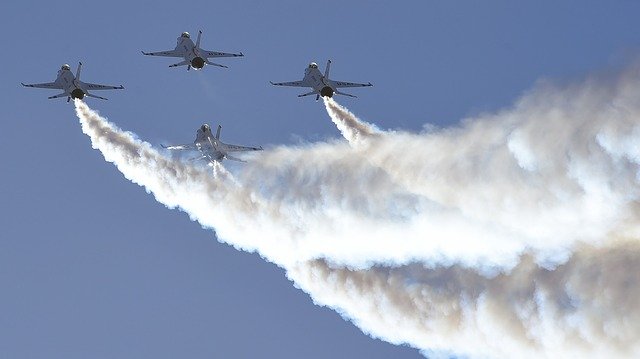Why when flying, behind the plane dragged a strip of white smoke?
Hear the noisy airplane at the top of the head, looking up, often see: the plane has passed, behind it has a long tail like a strip of white smoke. That “white smoke” band will gradually diffuse, fade, then disappear.
You might think: the tail is caused by smoke when the jet fuel is burned, just like the kind of exhaust that cars and generators release. The tail is smoke, but it must be said that it is a cloud because it is very similar to a cloud.
We know that inside the cloud, there are countless small water droplets and small ice crystals. They are due to the condensation of water vapor in the air. This formation requires two conditions: first, there must be sufficient steam and reach saturated steam pressure; then, there is the need for dust particles and charged particles to cause the nucleus to coagulate. Thus, the steam that has reached the saturated steam pressure can condense around the agglomerating nucleus, forming small water particles or small ice crystals. Small water droplets and small ice crystals huddle together to form a large cloud.
Knowing how clouds formed, we now return to the meticulous study of the “white smoke tail.” As the aircraft flies forward, the space occupied by the fuselage requires ambient air to fill. But, aircraft fly very fast, exceed the sound speed, and the air is not a good conductor of heat. The surrounding air compensation process is equivalent to an adiabatic expansion process; the air temperature will drop quickly. There is a lot of water vapor in the high sky; the lower the temperature, the lower the saturated steam pressure, the surrounding steam reaches the saturated steam pressure. That satisfies the first condition for cloud formation. Also, burnt airplane fuel does release some dust, which can cause the core to condense. So, the steam behind the aircraft quickly agglomerated around the dust particles, forming many small water droplets. That is the rather long tail behind the plane we see.

You may ask, why clouds can float in the sky for a very long time, and the “cloud” band trailing behind the tail of a plane dissipates so quickly? First, the volume of the two types is different. The diameter of a cloud is at least several tens of kilometers. Clouds can also gradually dissipate, but until it is completely dissipated also takes a relatively long time. And the clouds born behind the plane are much smaller, so it’s easy to dissipate. There is also a very important cause: the clouds behind the plane form up in the blink of an eye when the plane flies over; due to the low air temperature, the saturated steam pressure drops to reach saturated steam pressure. With the momentum of the air temperature slowly rising again, the steam does not reach saturated steam pressure; small water droplets and small ice crystals gradually evaporate into steam and disappear without a shadow.




